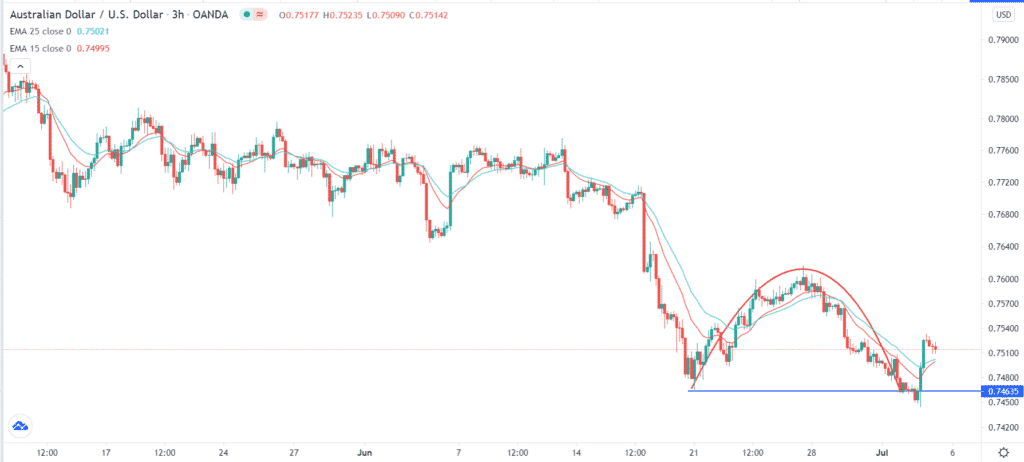The AUD/USD pair has formed an inverse cup and handle pattern ahead of the upcoming Reserve Bank of Australia (RBA) interest rate decision. The pair is also little changed as investors continue reflecting on the latest US non-farm payrolls (NFP) data. It is trading at 0.7517, which is about 1% above the lowest level last week.
US jobs growth
The American economy is doing well, signaling that the Federal Reserve will be justified to maintain its hawkish stance. Data published on Friday by the Bureau of Labor Statistics (BLS) showed that the economy added more than 850,000 jobs in June.
The government added 166k jobs, while sectors like leisure and hospitality added more than 340,000 jobs. The two sectors were among the most affected by the pandemic since these jobs were seen as being non-essential. Other industries that added more jobs were retailers and warehouse operators.
At the same time, wages kept rising as employers battled to find new workers. The average hourly wage rose by 3.6% in the year through June and by 0.3% on a month-on-month basis.
Other economic numbers have been relatively strong recently. For example, inflation has risen at the fastest pace in a decade while manufacturing and industrial production have all risen.
As such, the AUD/USD and other forex majors are waiting for more guidance from the Federal Reserve. In its June interest rate decision, the bank said that it would likely start hiking interest rates in 2023. This increase will be relatively earlier than the expected 2024. Therefore, later this week, the pair will react to the FOMC minutes that will provide more details about the bank’s decision.
RBA rate decision ahead
The AUD/USD will also react to the latest Reserve Bank of Australia (RBA) decision. The bank will conclude its monetary policy meeting on Tuesday morning. The bank is expected to leave interest rate policy unchanged at the current rate of 0.10%.
At the same time, the committee is expected to announce changes to its quantitative easing (QE) and yield curve control (YCC) policies. The changes will be due to an overall stronger economic recovery than expected. Analysts expect that the bank will not extend the 3-year yield target to the November 2024 bond. The bank is also expected to announce a new quantitative easing program but with more flexibility.
The decision comes at a time when the economy is doing relatively well. For example, the labour market has tightened, and house prices have risen to historic highs. Data published on Monday showed that the services PMI declined to 56.8 in June. This shows that the services sector is still doing well since a PMI reading of about 50 and above is usually a positive sign.
Meanwhile, private house approvals declined by 10.3% in May after rising by 5.9% in April. Still, media reports and official data show that most Australians are taking advantage of low rates to buy homes.
AUD/USD technical analysis
The three-hour chart shows that the AUD/USD pair declined to a low of 0.7443 last week. It then spiked after the latest US non-farm payrolls data. The chart also shows that the pair formed an inverse cup and handle pattern that is usually a bearish sign.

Therefore, there is a probability that it will resume the bearish trend later this week. If this happens, the pair will likely keep falling as bears target the next support at last week’s low at 0.7443.



